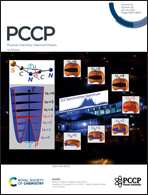Thermal stability of azole-rich energetic compounds: their structure, density, enthalpy of formation and energetic properties
Abstract
Energetic compounds, as a type of special material, are widely used in the fields of national defense, aerospace and exploration. Their research and production have received growing attention. Thermal stability is a crucial factor for the safety of energetic materials. Azole-rich energetic compounds have emerged as a research hotspot in recent years owing to their excellent properties. Due to the aromaticity of unsaturated azoles, many azole-rich energetic compounds have significant thermal stability, which is one of the properties that researchers focus on. This review presents a comprehensive summary of the physicochemical and energetic properties of various energetic materials, highlighting the relationship between thermal stability and the structural, physicochemical, and energetic properties of azole-rich energetic compounds. To improve the thermal stability of compounds, five aspects can be considered, including functional group modification, bridging, preparation of energetic salts, energetic metal–organic frameworks (EMOFs) and co-crystals. It was demonstrated that increasing the strength and number of hydrogen bonds of azoles and expanding the π–π stacking area are the key factors to improve thermal stability, which provides a valuable way to develop energetic materials with higher energy and thermal stability.

- This article is part of the themed collection: 2023 PCCP Reviews


 Please wait while we load your content...
Please wait while we load your content...